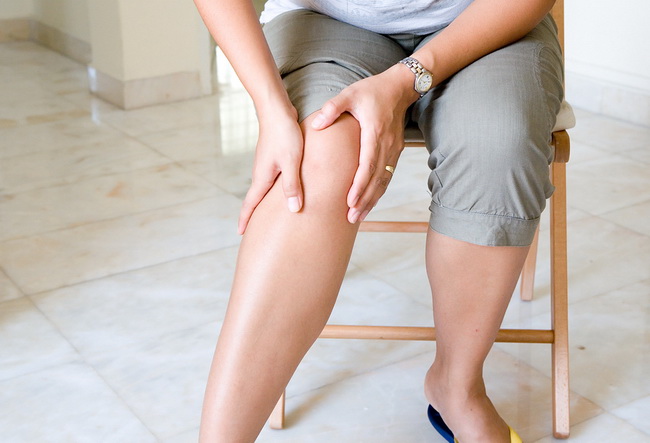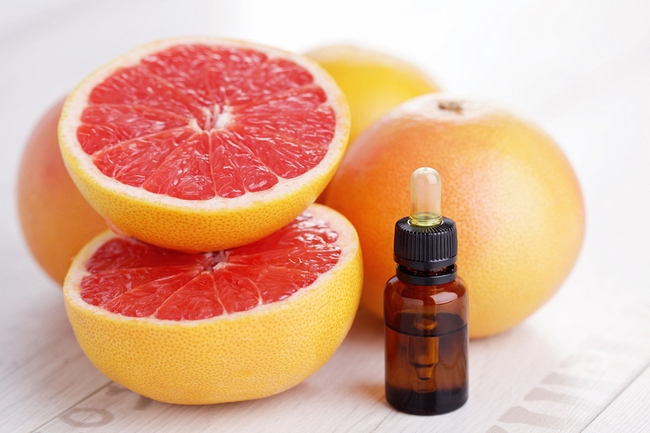- Make It Yourself Lavender Heart-Shaped Bath Bombs!
- 20 Things You Never Knew About “Down There”
- 12 Best Foods For Those Suffering From Arthritis Pain
- 12 Personal Hygiene Mistakes Almost Everyone Makes (Mom Never Told You About #4!)
- 15 Medicinal Plants And Herbs From The Cherokee People
- 12 Mind-Blowing Benefits Of Drinking Coconut Water During Pregnancy
- 12 Outstanding Winter Foods That Won’t Fatten You Up Like A Christmas Turkey
12 of the Most Powerful Ways to Reduce Swollen Legs, Ankles, and Feet

Photo credit: bigstock.com
Do you suffer from swollen legs, feet, or ankles? Perhaps all three?! Well, we have 12 ways to help reduce that swelling and get things back to normal.
There are many reasons people experience peripheral edema (the fancy word for swollen legs and feet) including pregnancy, excessive time spent sitting in one position, standing for long periods of time, medication, and excess weight. Although not harmful, it certainly can be painful and uncomfortable to say the least!
You don’t need to suffer any longer. Keep reading for the 12 most powerful ways to get rid of that edema and, well, get back on your (not swollen) feet!
1. Take a Magnesium Supplement
Something as simple as a magnesium deficiency can cause edema, and taking a supplement is sometimes all you really need. Most doctors will recommend about 200mg twice per day, but if you are pregnant or taking prescription medication, talk to your doctor first. The RDA for magnesium is 350mg per day. Magnesium is difficult for the body to absorb, so you might also opt to use a magnesium infused lotion, oil, or cream instead, since it’s easier for the body to use magnesium this way. Many people find that simply adding a magnesium supplement to their diet is all that was needed to relieve swelling in the legs and feet.
2. Tonic Water Soak
This sounds a bit strange, but for some reason soaking your feet and ankles in some cold or room temperature tonic water really helps with swelling. The quinine helps reduce inflammation and those little bubbles tickle, but in a good way. If you need to soak more than just your feet or ankles, well, this might not be for you because you would need a tubful of tonic water and that could get pretty expensive!
3. Massage
Treat yourself to a professional massage! Someone trained to do massage can simply do wonders for those swollen legs, feet, and ankles. Don’t be embarrassed; explain the problem and your massage therapist should be able to help you and get things moving, which will help reduce swelling. If you are pregnant, look for a therapist who specializes in prenatal massage. They will know exactly how to make you feel super comfortable.
Continue to Page 2

Photo credit: bigstock.com
4. Splash Around
Swimming, or even just floating, in water can really help to relieve those swollen legs. The pressure from the water gets the circulation moving, but it also gives your body a break from the constant pull of gravity. If you don’t have access to a pool, check out local gymnasiums or swimming classes to see if there are rental hours available. Many high schools with indoor pools often have hours for recreational swimming for a super reasonable price.
5. Speaking of Water
Besides putting your body in water, you should also remember to put water in your body. Excess salt is one big reason why our legs and feet swell up and increasing your fluid intake will dilute the salt in your blood. Try your best to drink 8 glasses of water each day, and then a few cups of herbal tea for good measure. Want to improve that water? Add a few slices of cucumber or lemon to that glass of water. These fruits have anti-inflammatory compounds that will give your salt reducing water an extra anti-swelling punch! Read more about benefits of cucumber water.
6. Parsley Leaf Tea
Remember how we were just talking about drinking a few cups of herbal tea? Well, here is one you should try. Parsley leaf tea is a natural diuretic, so it will help to remove excess water from the body. You can buy this tea in most health food stores, or make your own by boiling about 2 tablespoons of dried, powdered parsley leaf in two cups of water. Cover the pot, turn off the fire, and allow to sit overnight. Strain and add some lemon juice. Drink three cups one day, and then wait 3 days before you repeat the process. Continue until the swelling disappears.
Continue to Page 3

Photo credit: bigstock.com
7. Grapefruit Essential Oil
A warm bath with 5 or 10 drops of grapefruit essential oil can also work to reduce swelling. While you are soaking, rub your legs, feet, and ankles upwards, towards your heart. Soak for a minimum of 20 minutes.
8. Put Your Feet Up
Gravity is simply not your BFF when it comes to fighting swelling in the legs. This gives you the perfect excuse to put your feet up every chance you get. Although the ideal position is to put your feet above the level of the heart, any elevation is going to help things flow the other way. So prop up your feet on some pillows, or hubby, or even on your desk at work. At least until the boss walks by!
9. Support Hose
OK, perhaps these aren’t the most stylish things around, but put on some pants and no one will know. Support hose, sometimes called compression stockings or even compression gear, are great at stopping swelling, especially for those of you who are on your feet all day. These are pretty darn tight, but they really make a difference. If they make your feet cramp after a few hours, try footless stockings.
Continue to Page 4

Photo credit: bigstock.com
10. Flaxseed Tea
Here is another good tea option. Put 2 liters of water in a pot and add 8 teaspoons of flaxseed in the water. Place on the stove and bring to a boil, then reduce the heat and allow to simmer for 15 minutes. Turn off the heat, cover, and leave on the stove for one hour. Strain, and then add the juice of 2 organic lemons. Drink this tea twice a day for 2 weeks, or until your swelling has disappeared.
11. Saline Soak
This is a natural way to remove excess water from the body. Dissolve about 2 pounds of plain old salt in 10 liters of cold water. Soak a small towel in this solution and wring it out. Place the towel on the lumbar (lower) part of the back and leave it there for about 20 minutes. Do this every night before bed for 10 days. Your swelling should decrease dramatically.
SEE ALSO: Top 5 Knee Problems: How to Fix Them and How to Avoid Them
12. Try Yoga
Exercise can help improve circulation in the body, which will naturally get the excess fluid out of your legs. Yoga is a great way to improve circulation naturally! If you haven’t done exercise in a while, or if you are pregnant, talk to your doctor first. Yoga classes are great because the instructor will be sure you are doing the poses correctly and might even be able to suggest other poses that can help with your leg and feet swelling. Once you feel comfortable, you can always continue at home. If you don’t have classes in your area, there are plenty of DVDs available for rent or online.
References:


































Kitsy WooWoo
Jun 17, 2015 at 12:57 pm
I’m a big fan of rebounding; it’s great for the circulation and fun to do. There’s no need to jump up and down on the thing — in fact, I suggest you don’t, if you’re “of a certain age” — .just gently bounce, keeping the feet (bare, in my case) in place. I’ve been doing this for many years, twice a day, 10 minutes in the early morning and 5 or so before I go to bed. You can also do a little arm action while you’re at it. 🙂
http://www.necksecret.com/Rebounding.html
Maizie
Apr 19, 2016 at 12:51 am
My mom gets swollen ankles a lot and loves the cold ankle wrap I got her. Gives you good cold therapy along with compression. http://kingbrand.com/Ankle-Ice-Packs-and-wraps.php?REF=46PV6
MendMeShop
Sep 12, 2016 at 10:40 am
For standard muscle and soft tissue injuries, a cold quality cold compression therapy can be beneficial for reducing bouts of inflammation and minimizing tissue damage. If fluid accumulation persists, then one will want to rule out circulatory or cardiovascular issues as a potential cause. http://shop.aidmyachilles.com/product_info.php?products_id=148
Tara-Face
Jan 22, 2018 at 8:27 pm
I need help man this swokleness hurts